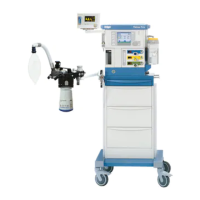
Do you have a question about the Dräger Fabius Series and is the answer not in the manual?
| Type | Anesthesia Workstation |
|---|---|
| Manufacturer | Dräger |
| Ventilation Modes | SIMV |
| Flow Control | Electronic |
| Tidal Volume Range | 20 to 1400 mL (model dependent) |
| Respiratory Rate | 4 to 60 breaths/min |
| PEEP | 0-20 cmH2O |
| Gas Supply | O2, Air, N2O |
| Vaporizer Mounts | 2 |
| Monitoring | O2, CO2, N2O |
| Dimensions | Varies by model |
| Weight | Varies by model |
| Model | Fabius Series |
| Category | Anesthesia |
Ensure medical personnel are well-trained and familiar with anesthesia device characteristics.
Anesthesia devices should be used in rooms with adequate ventilation and protected from unauthorized users.
A manual resuscitator must always be available for backup ventilation in case of device malfunctions.
An O2 backup cylinder is required to ensure desired FiO2 levels in case of central gas supply shortages.
Proper scavenging is recommended to avoid oxygen accumulation in the device environment.
Disconnect all vaporizers and prevent N2O use to avoid anesthetic agent risks like malignant hyperthermia.
Follow hospital guidelines for infection prevention, including device reprocessing and bacteria filters.
Use only mechanical filters; active humidification requires specific circuit configurations and monitoring.
Devices must be tested every 24 hours to ensure readiness for operation; perform a complete test for new patients.
Restart devices periodically to prepare software for long-term use.
Regularly check the overall status of the device and accessories, preventing issues like exhausted CO2 absorbers.
Maintain a high fresh gas flow (at least 150% of minute volume) to avoid rebreathing and humidity issues.
Leakages are not compensated; pressure control mode offers advantages, and appropriate alarms should be monitored.
Understand specific modes like Man/Spon and be aware that not all ICU ventilator modes are available.
Set alarm volume to maximum (100%) to ensure timely recognition of alarms.
Set patient-specific alarm limits for parameters like minute volume and CO2 to generate necessary alarms.
Alarm notifications are removed when the situation is no longer valid; check the alarm history periodically.
Gas measurement modules must be connected; values have a delay, and FiO2 requires attention due to rebreathing.
Reduce suction power and consider disconnecting the manual breathing bag to prevent negative pressures.
Nebulization is not approved; use mechanical filters or disconnect the sampling gas line.
If a main component fails, immediately switch to an alternative means of ventilation.
Discusses differences in modes like Volume Control, Pressure Support, and NIV compared to ICU ventilators.
Provides a comparison of ventilation modes across Fabius, Apollo, and Perseus families.
Details the correct setup and variants of the Fresh Gas Outlet (FGO) on Fabius devices.
Explains recommendations for proper scavenging to avoid oxygen accumulation.
Describes how to increase fresh gas flow using the emergency O2 flow control on Perseus devices.
Provides tables and examples for setting fresh gas flow and O2 concentration.
Offers guidance and decision trees for managing supply shortages of components like soda lime and filters.
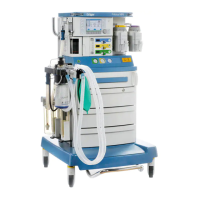
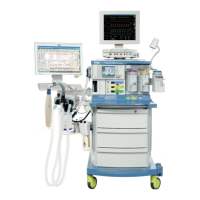

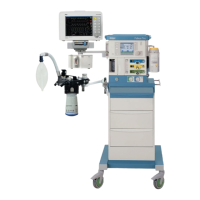
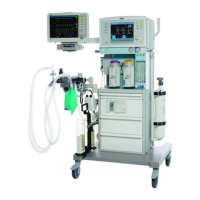
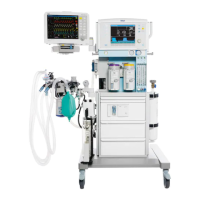

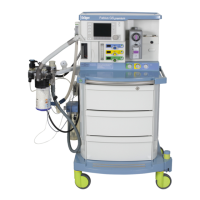
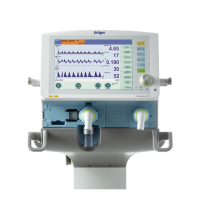
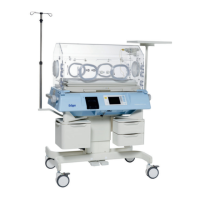
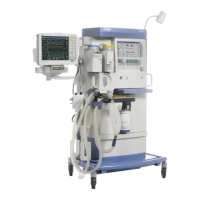
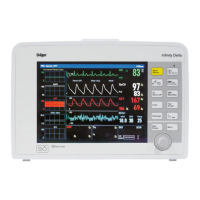
